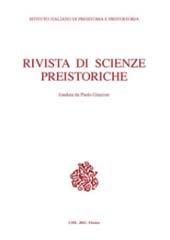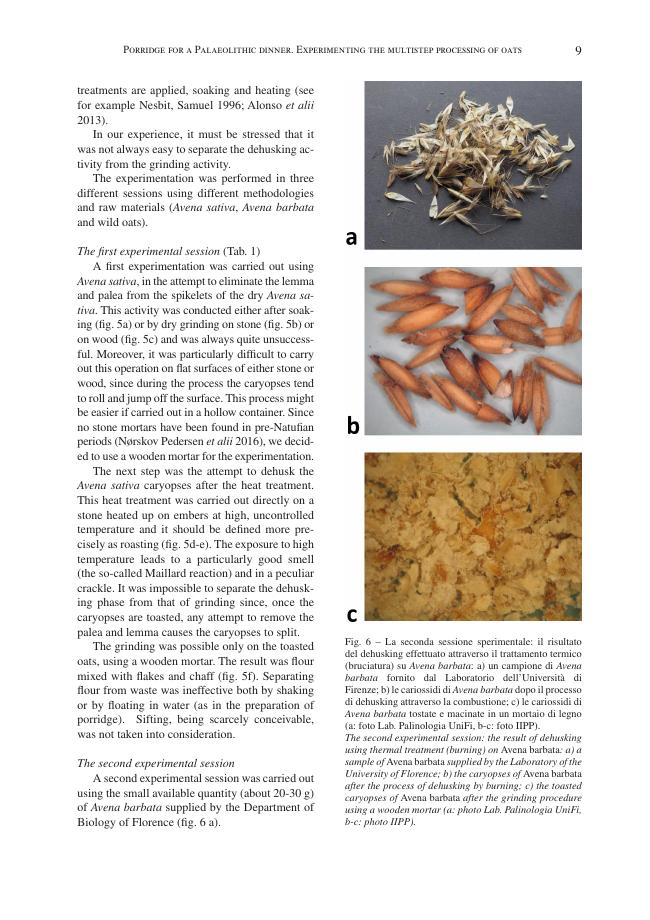Porridge for a Palaeolithic dinner : experimenting the multistep processing of oats
P. 1-16
Residue analyses on a Gravettian grinding tool recovered at Grotta Paglicci (32.614±429 cal BP), Southern Italy, have confirmed that early modern humans collected and processed a variety of wild plants for food purposes. The recording of starch grains attributable to wild oat caryopses (Avena cf. barbata) expands our information about the food plants used for producing flour in Europe during the Palaeolithic, and about the origins of a food tradition persisting up to the present in the Mediterranean basin. The particular state of preservation of the starch grains suggests the use of a thermal treatment before grinding, possibly to accelerate drying of the caryopses, making the following process easier and faster. The experimentation presented here is part of the Istituto Italiano di Preistoria e Protostoria (IIPP) research project “PLUS_P” (PLant USe in the Palaeolithic), dealing with technologies for plant food processing documented by stone tools with use-wear traces and plant residue found in several
The goal of this work is to reconstruct the technologies for processing oat caryopses to obtain flour, from harvesting to grinding, including the more complex activities such as dehusking and thermal pre-treatment. The dehusking activity is the most difficult to perform in the operational chain but is of paramount importance for the human consumption of oats. The experimentations performed allow us to verify that the heat treatment was related to the dehusking process. Although wild oat processing is particularly time/energy consuming, the nutritional and organoleptic characteristics of this plant food nevertheless justify the effort of the Gravettian groups. [Publisher's text]
L'analisi dei residui effettuata su un pestello-macinello gravettiano recuperato a Grotta Paglicci (32.614 ± 429 cal BP) in Italia meridionale, ha confermato che i primi uomini anatomicamente moderni raccoglievano e lavoravano una varietà di piante selvatiche a scopo alimentare. Il rinvenimento di granuli di amido riconducibili ad avena selvatica (Avena cfr. barbata) amplia le nostre informazioni sulle piante utilizzate a scopo alimentare, e in particolare per la produzione di farina, in Europa durante il Paleolitico, e sulle origini di una tradizione alimentare persistente fino ad oggi nel bacino del Mediterraneo. Il particolare stato di conservazione dei granuli di amido suggerisce l'utilizzo di un trattamento termico prima della macinazione, probabilmente per accelerare la disidratazione delle cariossidi, rendendo più facili e rapidi i successivi processi. [Testo dell'editore]
Fa parte di
Rivista di scienze preistoriche : LXXI, 2021-
Articoli dello stesso fascicolo (disponibili singolarmente)
-
Informazioni
Codice DOI: 10.32097/1144
ISSN: 2282-457X
PAROLE CHIAVE
- Archeologia sperimentale, Farina, Processamento degli alimenti vegetali, Macine – Pestelli, Decorticazione
- Experimental archaeology, Flour, Plant food processing, Grindstones, Dehusking



